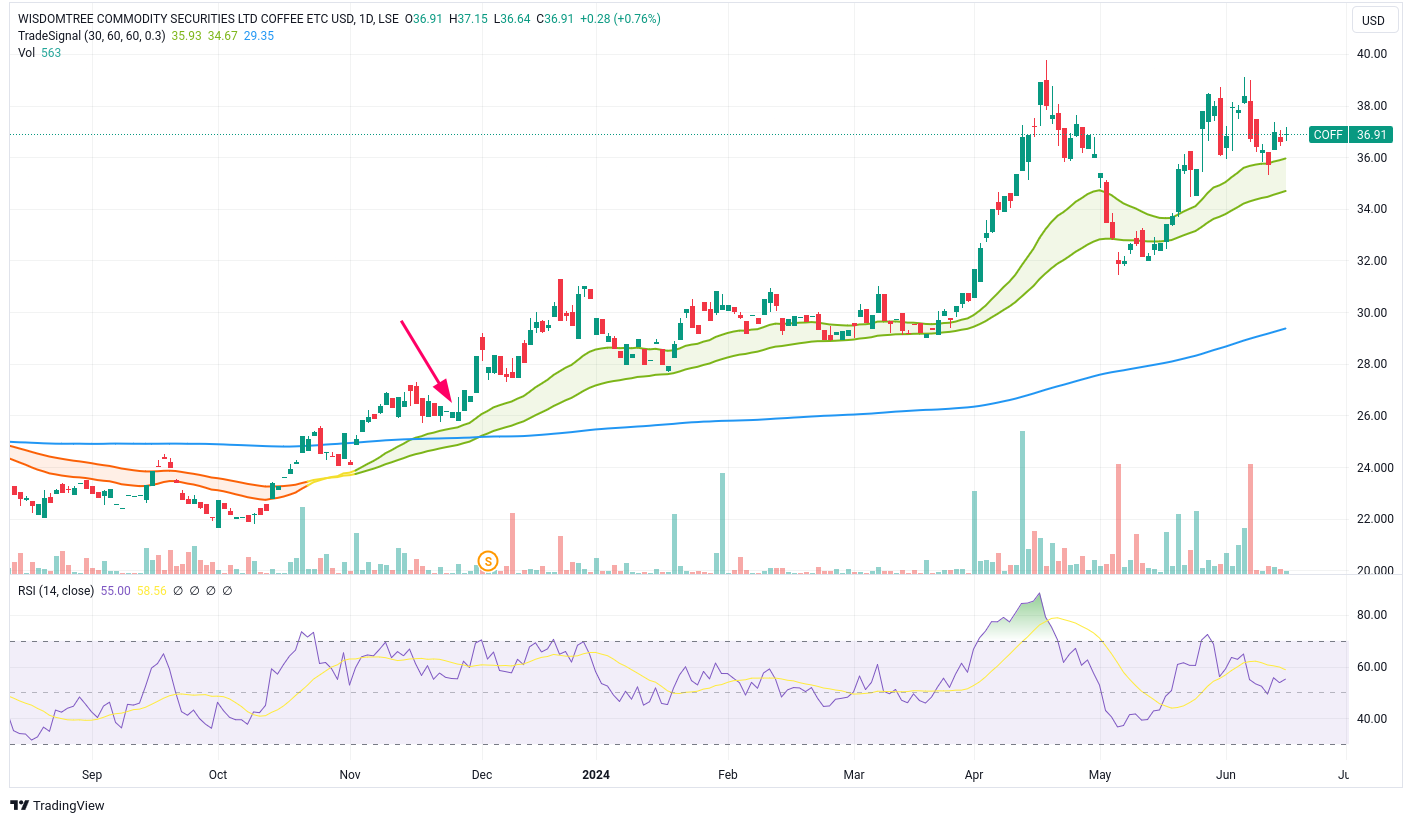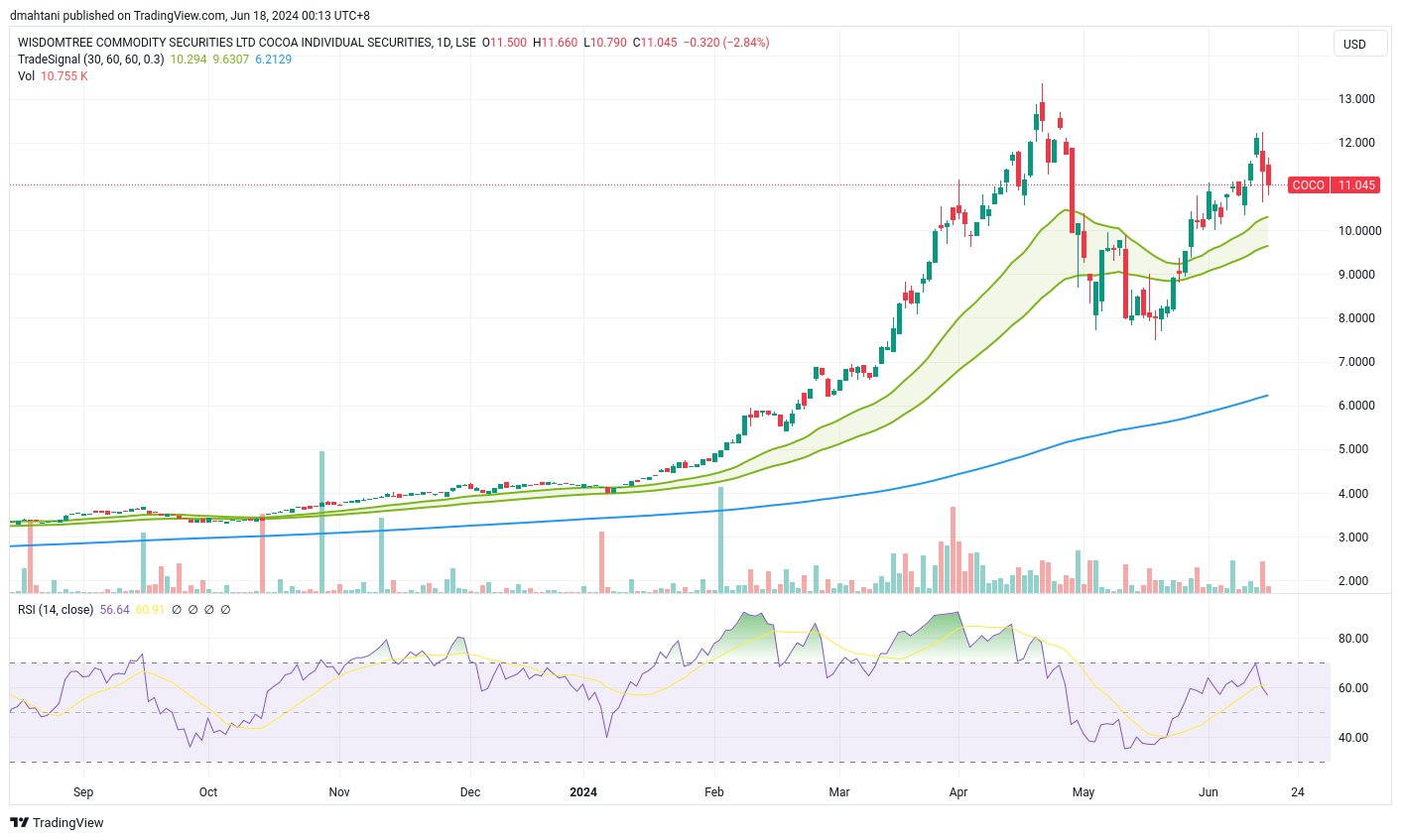Introduction
As I consume news and analysis on various global events, I often find myself asking:
This is interesting, but how do I make money from it?
It's a question that I believe many investors, particularly those new to the game, should be asking more frequently. In today's information-saturated world, it's easy to get carried away consuming all sorts of financial news related to micro or macro. But if that content doesn't enable you to make profitable trades or inform a viable investment strategy, then what is the point of consuming it?
This question has been at the forefront of my mind lately as I've been looking into the world of agriculture commodities. In a world of rising temperatures and shifting weather patterns, I see meaningful opportunities to capitalize on climate-driven disruptions and volatility in these markets. The last century of food production has taken place in a period of relative climate stability, but that era appears to be ending. For investors willing to dive into the details of how different crops respond to changing weather conditions, there is real alpha to be harvested.
In this article, I'll share the framework for my thesis and some actionable investment ideas I am exploring in the ag-commodity space. By diving into the specific ways that rising temperatures and changing weather patterns are impacting crops like almonds, cocoa, and coffee, investors can gain an understanding of how to start converting these dynamics into alpha-generating trades and portfolio strategies.
The Ag-Climate Nexus
Many of the foods we consume and the crops that underpin multi-billion dollar markets are highly sensitive to temperature and weather conditions. Cocoa trees, for example, require consistent rainfall and specific temperature ranges to thrive. Coffee plants are similarly particular about their growing conditions. As global temperatures rise and precipitation patterns shift, the delicate balance that has supported the world's productive agricultural regions is becoming harder to maintain.
It's not just the crops themselves that are sensitive to weather. The entire supply chain, from planting and harvesting to processing and transport, has been optimized around historical climate norms. When those norms are disrupted, it introduces new vulnerabilities and inefficiencies that can affect both the quantity and quality of the end product.
This dynamic is playing out in a number of key agriculture markets. In California, a major producer of almonds, walnuts, and other valuable crops, prolonged droughts and devastating forest fires are becoming more frequent and severe. This not only stresses the water-intensive almond trees, but also forces farmers to make difficult choices about how to allocate limited water resources. The result is a recurring threat of supply shortages and price spikes.
Climate and Crop Case Studies
To illustrate the investing implications of these climate ag-commodity dynamics, let's take a closer look at a few specific examples.
Almonds: California, producing around 80% of the world's almonds, is particularly vulnerable to drought. As water scarcity becomes a recurring feature of the landscape, investors should expect higher almond prices and more frequent bouts of volatility.
Cocoa: West Africa accounts for over 70% of global cocoa production, but the crop is highly sensitive to temperature and humidity. As temperatures rise and weather patterns become more volatile, it threatens both the quantity and quality of cocoa harvests. This points to an expectation of tighter supplies, higher price volatility, and potential opportunities in futures markets.
Coffee: Coffee plants require specific amounts of rainfall and sunlight to produce high-quality beans. Prolonged droughts, heat waves, and extreme precipitation can reduce yields and alter flavor profiles. As weather patterns shift, investors should anticipate recurring threats to coffee supplies from key origins like Brazil.
Wine Grapes: Premium wine grapes are acutely sensitive to climate conditions. Heat waves can cause grapes to ripen too quickly, while ill-timed frosts can devastate a vintage. This creates a heightened risk of supply shortages and price spikes for specific wine varieties and growing regions.
From Insights to Alpha
For investors, the goal is to translate an understanding of these climate-commodity dynamics into actionable trades and portfolio strategies. There are a few ways one can gain exposure to these trends.
Futures Contracts
The first is through the futures markets. Many of the crops discussed above have liquid futures contracts that allow investors to take direct, leveraged positions on future price movements. By analyzing climate models, crop calendars, and regional weather patterns, investors can identify potential supply disruptions and price dislocations in advance. Futures also provide a means to hedge against climate-related risks for those with physical exposure to these commodities.
However, I am acutely aware that almost all of my readership will not know how to trade futures contracts, which is why the next vehicle seems more attractive.
Exchange-Traded Products
There are ETPs that track agricultural commodity indexes via futures contracts. ETPs are to commodities what ETFs are to stocks. These can provide diversified exposure to the broader theme of climate-driven volatility in ag markets. More targeted ETPs may focus on specific crops or regions that are most sensitive to weather disruptions. As with futures, the key is to overlay climate analysis on top of traditional supply/demand fundamentals.
For example, one way to have capitalized on the recent coffee price boom is the WisdomTree Coffee ETC (COFF), which is an Exchange Traded Commodity (ETC) trading in London, designed to provide exposure to coffee futures contracts. It boasts an expense ratio of 0.49% and year to date it is up 29.23%. Had I been monitoring this ticker earlier, I would have likely opened a position at $26 when my TradeSignal flipped green and the price retraced back to fair value. I'm not saying the chart below can't keep moving higher, but $26 would have been the right time to jump onboard this train.

While 29% YTD is great, what I am really kicking myself over is missing the chance to enter into the WisdomTree Cocoa ETC (COCO) at $3.50 and being able to participate in the 189.51% YTD gain!

Equities
Investors can also play these trends through equities. Companies across the agricultural value chain, from farmers and processors to traders and retailers, are all impacted by climate-driven shifts in commodity markets. Those with strong risk management, diversified sourcing, and resilient supply chains may be better positioned to weather the storm. Conversely, companies with concentrated exposure to climate-vulnerable regions or crops may face greater risks. Active managers who can identify the winners and losers stand to benefit.
My preference though is to stick with strategies that involve the ag-commodity only as there are too many additional risks that come with buying a company. Bad management decisions or contracted rates that go south can lead to undesirable circumstances even in the face of a commodity rally. So while I mention this option here, it's not something I am looking at.
Lastly, there may be opportunities in the growing market for weather derivatives and climate risk transfer instruments. As businesses become more attuned to their exposure to climate variability, they are increasingly looking for ways to hedge that risk. This is likely to create new markets for products like weather futures, rainfall indexes, and temperature-linked derivatives. While still niche, these markets may offer uncorrelated returns for investors who can analyze and price climate risks.
Closing Thoughts
Climate change is no longer a distant threat – it is a present reality that is reshaping the investment landscape. For investors willing to roll up their sleeves and analyze the nuanced impacts on individual crops and commodities, there are significant opportunities to harness this volatility.
Of course, investing in climate-sensitive markets requires a long-term mindset. The goal is not to predict the weather, but rather to understand how changing weather patterns are likely to impact supply, demand, and price dynamics over time. This requires a willingness to dive into the granular details of each market and stay attuned to evolving climate trends.
Ultimately, marrying rigorous analysis with creative thinking will be key to harvesting alpha in a changing climate. For those who can connect the dots and see the opportunities in volatility, ag commodities offer a fertile ground. With the right approach, investors can position themselves to benefit from one of the most powerful and far-reaching trends of our time – the intersection of climate and capital markets.

